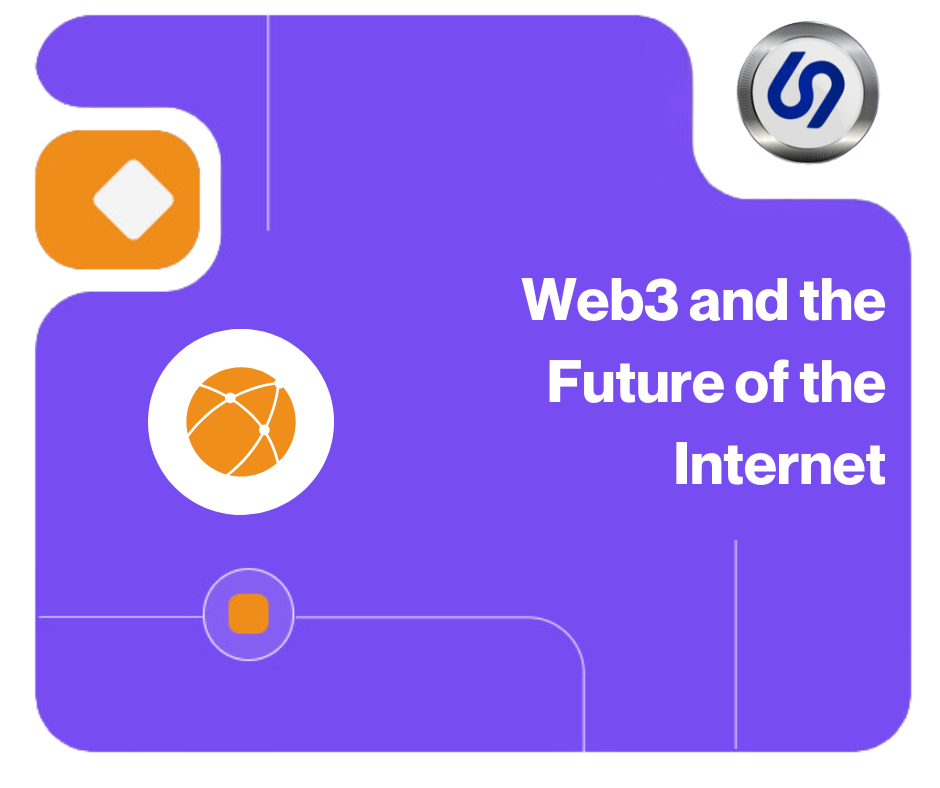
















 Web3 and the Future of the Internet
Web3 and the Future of the Internet
The internet has undergone significant transformations since its inception, evolving from the static web (Web1) to the interactive and social web (Web2). Now, we stand on the brink of the next major evolution: Web3. This new iteration of the internet promises to revolutionize how we interact online by introducing decentralization, enhanced security, and greater user control. In this blog, we’ll explore what Web3 is, how it differs from previous versions of the internet, and its potential impact on the future.
Web3, also known as the decentralized web, is the third generation of internet services that leverages blockchain technology, decentralized protocols, and smart contracts to create a more open, secure, and user-centric online experience. Unlike Web2, which relies heavily on centralized servers and databases controlled by a few major corporations, Web3 aims to decentralize data and applications, giving users greater ownership and control over their digital identities and assets.
Key Characteristics of Web3:
Decentralization: Operates on decentralized networks, reducing reliance on central authorities.
Enhanced Security: Utilizes cryptographic techniques to secure data and transactions.
User Ownership: Empowers users with control over their data and digital identities.
Interoperability: Enables seamless interaction between different platforms and applications.
Data Ownership and Privacy:
Web2: In the current Web2 model, user data is controlled by centralized entities like social media platforms, search engines, and cloud providers. These entities have the power to monetize user data and dictate privacy terms.
Web3: In Web3, users own their data. Decentralized networks and blockchain technology ensure that users have control over their information, allowing them to decide how it is used and shared.
Decentralized Applications (dApps):
Web2: Applications and services are hosted on centralized servers, creating single points of failure and vulnerabilities.
Web3: dApps run on decentralized networks, such as Ethereum, providing greater security and resilience. These applications are not controlled by any single entity, reducing the risk of censorship and downtime.
Trustless Transactions:
Web2: Transactions and interactions often require intermediaries to establish trust, such as banks, payment processors, and other third parties.
Web3: Trust is established through cryptographic algorithms and consensus mechanisms. Smart contracts automate and enforce agreements, eliminating the need for intermediaries and reducing transaction costs.
Financial Services:
Web3 is driving the growth of decentralized finance (DeFi), which offers financial services like lending, borrowing, and trading without traditional banks. DeFi platforms provide greater accessibility, lower fees, and increased transparency, empowering individuals globally.
Digital Identity and Privacy:
Web3 enables the creation of decentralized digital identities, allowing users to control their online presence and personal information. This reduces the risk of identity theft and enhances privacy by minimizing data exposure.
Content Creation and Ownership:
Creators can benefit from Web3 by having direct ownership of their content. Blockchain technology ensures that creators are fairly compensated for their work, with royalties and licensing fees automatically distributed through smart contracts.
Decentralized Governance:
Web3 introduces new models of governance through decentralized autonomous organizations (DAOs). DAOs allow communities to make collective decisions about the development and management of projects, promoting transparency and inclusivity.
Interoperability and Innovation:
Web3’s open protocols facilitate interoperability between different platforms and services, fostering innovation. Developers can build on existing protocols, creating a more collaborative and efficient ecosystem.
Scalability:
Web3 networks currently face scalability challenges, with slower transaction speeds and higher costs compared to centralized systems. Solutions like sharding and layer 2 protocols are being developed to address these issues.
User Experience:
For Web3 to achieve mainstream adoption, user-friendly interfaces and seamless experiences are crucial. Many current Web3 applications require technical knowledge, which can be a barrier for the average user.
Regulatory Environment:
The regulatory landscape for Web3 is still evolving. Clear regulations are needed to ensure security and compliance while fostering innovation. Balancing these aspects will be critical for the widespread adoption of Web3 technologies.
Web3 represents a transformative shift in the internet’s architecture, offering a more decentralized, secure, and user-centric online experience. By leveraging blockchain technology and decentralized protocols, Web3 aims to give users greater control over their data, enhance privacy, and foster innovation across various sectors. While challenges remain, the potential benefits of Web3 are immense, paving the way for a more open and equitable digital future.
As the internet continues to evolve, staying informed about Web3 developments will be crucial for understanding and navigating this new era. Embracing Web3 can lead to significant advancements and opportunities, reshaping how we interact, transact, and govern online.